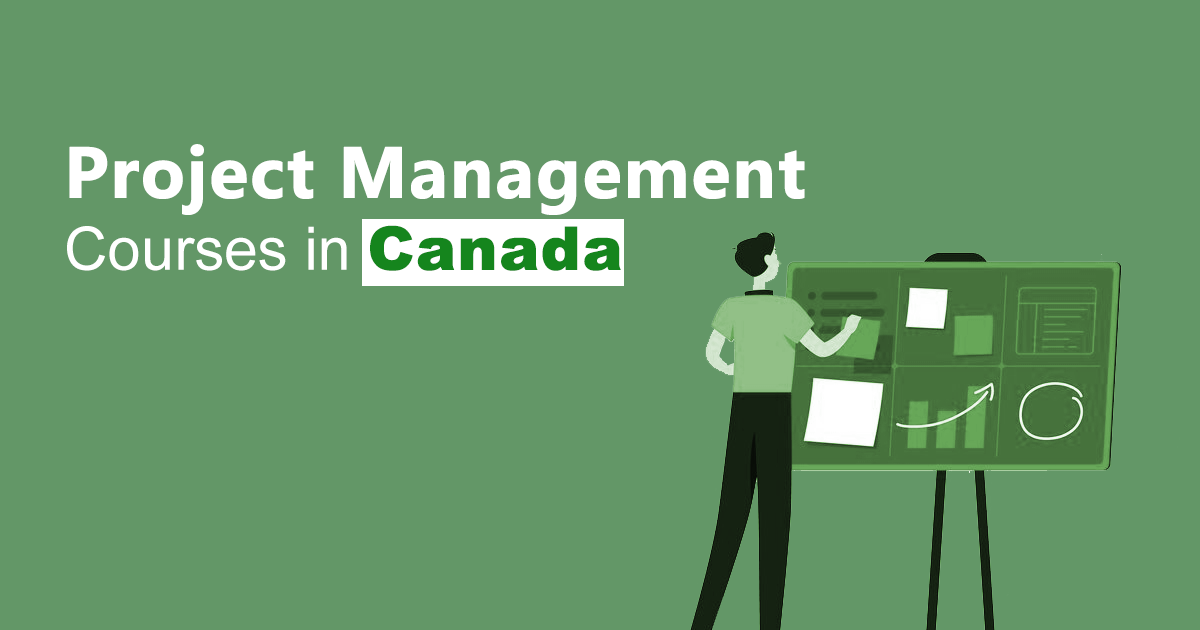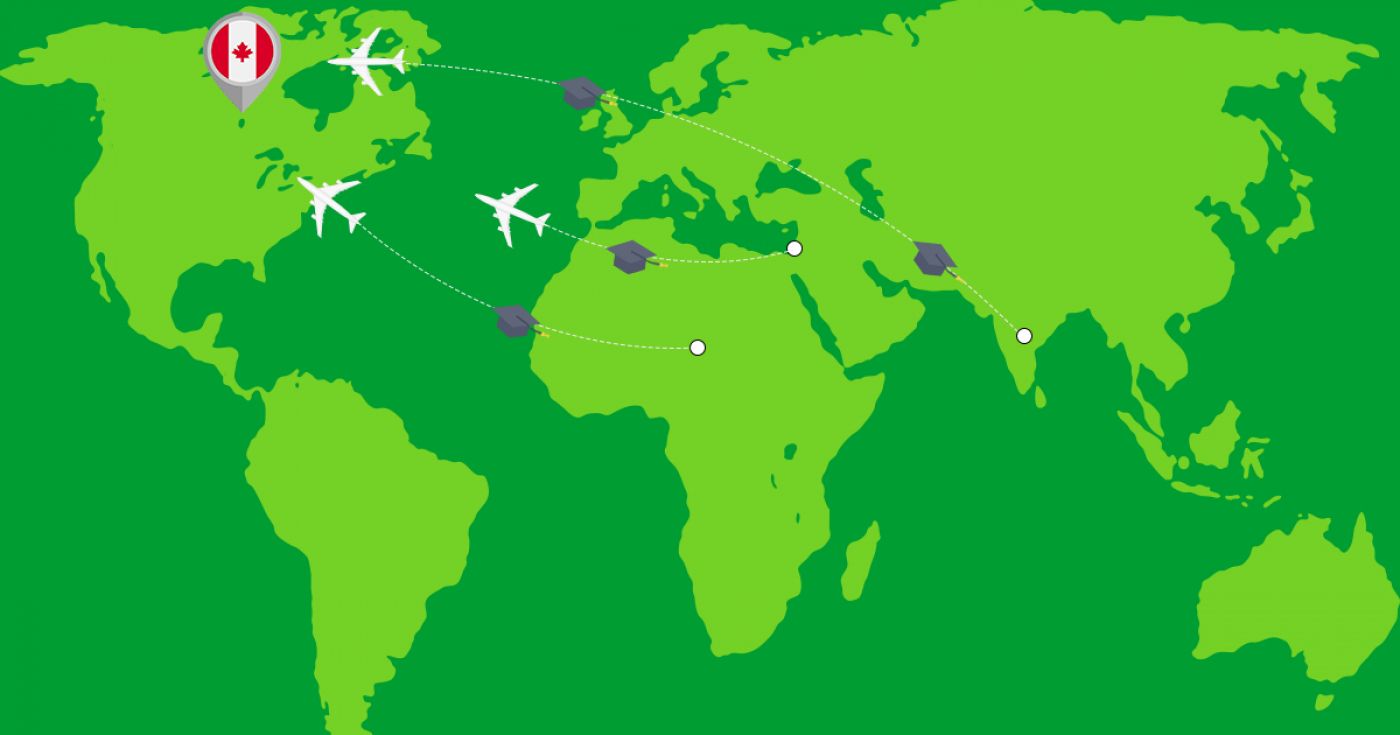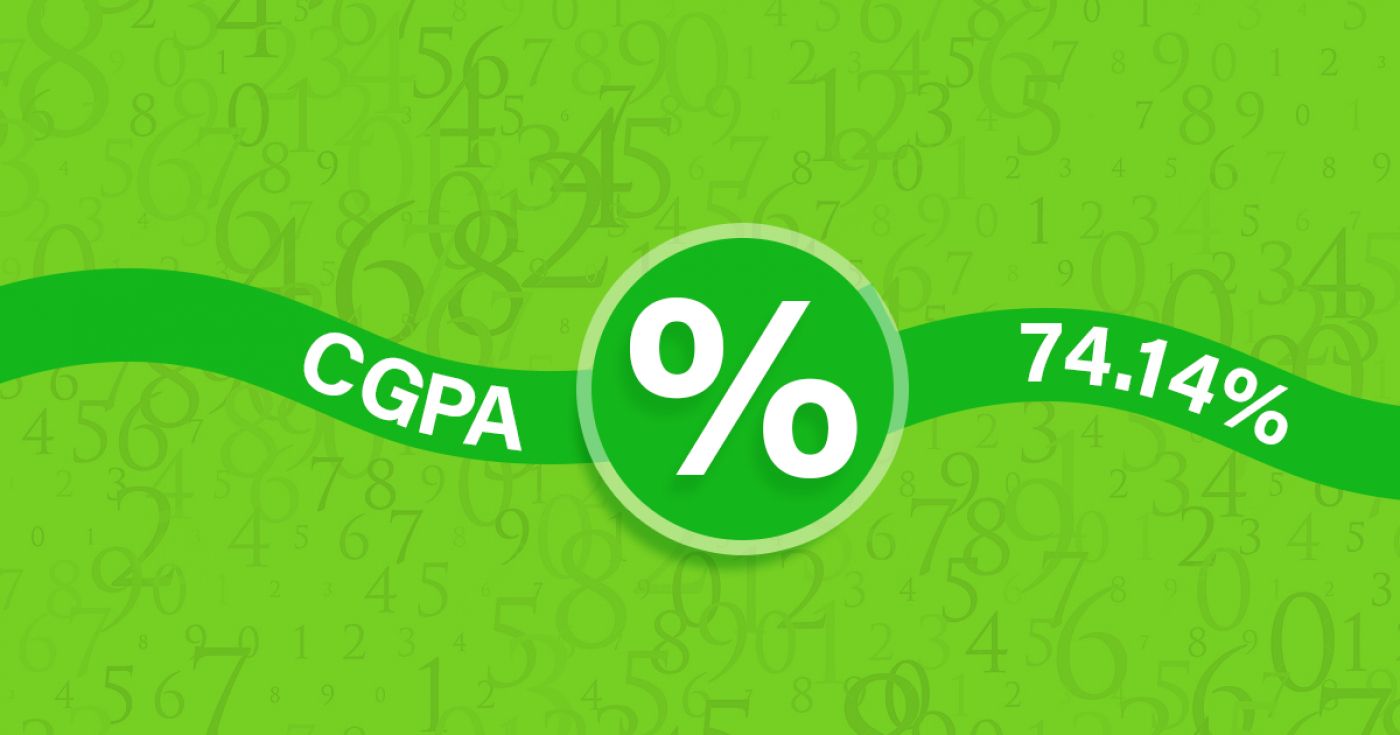Graduate Certificate in Insurance Management - Property and Casualty
at Humber College North Campus Canada
Overview
Insurance has become an integral part of virtually everything we do in life and business. Roles within the insurance industry are many and varied. Whether you enjoy working with numbers, doing research, solving problems or working with people, you can find your specialty in insurance.
Humber’s Insurance Management – Property and Casualty graduate certificate program prepares you for a variety of entry level management career paths in the large and growing property and casualty insurance industry. Learn the fundamentals of the industry and its three main functional areas – underwriting, loss adjusting and agency/brokerage – and gain transferable skills in business communications, computer applications, insurance accounting and metrics, marketing, sales and customer service, project management and leadership. Employment-focused experiential learning helps you consider a variety of options, as you launch your career.
Learning Outcomes
Upon successful completion of the program, a graduate will:
- Differentiate the functions of and the relationships between various elements within the structure of the insurance industry in Canadian and global contexts in order to identify business opportunities, challenges and solutions.
- Use current and relevant insurance industry-specific terminology when communicating with stakeholders.
- Assess and manage the four major categories of risk (hazard, operational, financial and strategic) to determine insurance needs associated with specific cases.
- Apply best practices for risk management to finance the negative consequences of risk events in multifaceted situations.
- Provide evidence-based recommendations for management of hazards and risks faced by an organization.
- Evaluate the clauses, terms and conditions of various insurance policy wordings in order to determine the appropriate coverage according to defined risk tolerance levels.
- Adjust, negotiate and settle insurance claims to satisfy needs of claimants and providers.
- Provide rationale for the acceptance or rejection of an application for insurance to uphold efficacy of decision-making.
- Evaluate the needs of a commercial and/or personal client in order to plan and recommend an insurance program that provides protection from identified exposures.
- Select leadership and communication strategies necessary to manage others and accomplish organizational goals.
- Prepare and deliver effective integrated marketing, customer service and sales plans to further organizational objectives.
- Develop, interpret and present common property and casualty insurance industry metrics and financial statistics and data to support organizational decision-making.
- Apply project management methodologies to identify, plan, and execute various property and casualty insurance managerial projects.
- Develop strategic business plans in order to respond o changing opportunities and challenges within the property and casualty insurance business.
Work Placement
Get hands-on experience in the industry with a 160-hour (minimum) work placement that will give you the opportunity to apply what you have learned in the classroom. Students initiate the placement with the aid of faculty, targeting companies in the Greater Toronto Area. Placements can be completed on a part-time basis throughout the academic year, or full time during the term immediately at the end of the program.
30
Application Processing Days
Post Graduate
Program Level
Fact & Figures
Full Time On Campus
Study Mode
12
Duration
Humber College North Campus
Location
Graduate Certificate in Insurance Management - Property and Casualty Assistant Fee
$18048
Tuition Fee
$12000
Average Cost of Living
$75
Application Fee
2
Backlogs Allowed
Graduate Certificate in Insurance Management - Property and Casualty Admissions Requirements
- Minimum Level of Education Required: To be accepted into this program, applicants must have a bachelor’s degree, advanced diploma or diploma.

Get superfast admissions at top Graduate Certificate in Insurance Management - Property and Casualty institutes in 2024
Benefits of choosing
➤Admission’s guaranteed at Top institutes across the world.
➤Enjoy exclusive application fee waiver’s with Edmissions.
➤Unlimited FREE Counselling sessions with Edmission’s
Experts
➤Get Tips from industry veterans to crack the IELTS exam in 1
week.
➤Assistance with scholarships, loans, forex, student accommodation and visa guidance.
Work Permit Canada
Students who wish to work in Canada require a work permit to do so. A student in Canada can work part-time during the course of his studies and full-time during holidays and semester breaks and post the completion of their course/program.
Rules for getting a part-time work visa in Canada
You can also work part-time on campus at your university.
Work Permit
Duration
Your part-time work permit will be valid for as long as you have a valid study permit.
Working Hours
20 Hours/Week
As a full-time student, you can work for a maximum of 20 hours a week. However, you can work full- time during holidays and breaks.
Document Required to Work in Canada
List
To apply for a work permit, you will need a study permit that mentions that you are allowed to work part-time on campus.
Social Insurance Number
Study Permit
You will need a Social Insurance Number (SIN) to Service Canada. if you wish to work in Canada during the course of your studies. To apply for the same, you need a valid study permit, and you should be a full- time student at a recognized university.

You can work part-time off-campus if you are studying in the Quebec province.
Duration of Work Permit Canada
Your part-time work permit will be valid for as long as you have a valid study permit.
Work Hours Canada
As a full-time student, you can work for a maximum of 20 hours a week. However, you can work full- time during holidays and breaks.
Document Required to Work in Canada
To apply for a work permit, you will need a study permit that mentions that you are allowed to work part-time on campus.
Social Insurance Number
You will need a Social Insurance Number (SIN) to Service Canada if you wish to work in Canada during the course of your studies. To apply for the same, you need a valid study permit, and you should be a full- time student at a recognized university.
Working after completing your course
In Canada, you will need a work permit to get a full-time job in Canada after finishing your studies. You chose a work permit like the Post-Graduation Work Permit (PGWP) if you wish to stay back in Canada and work full-time.
Visit Government of Canada Website for more detail
Post-Graduation Work Permit (PGWP)
The Post- Graduation Work Permit (PGWP) allows you to work for three years in Canada if you have completed a two years degree or more.
Application
how can i apply
You can either apply online or download the form and mail the application along with the required documents. Pay your fee and then wait for the decision to come.
Application Documents Required
List
To apply for the work visa, you need a degree from a recognized and accredited Canadian University along with an intention to stay and work in Canada only temporarily.
When to Apply?
One can apply for the full-time work permit in the first three months post the completion of their course during which the study permit is still valid.
How long does it take?
90 days
You will have to wait for 90 days for the decision on your work permit.
Duration
3 Years
The work permit is valid for 3 years if you have completed a two years degree program or more.
Fees
CAD 255
The fee for the work permit is CAD 255 plus the holder fee and the work permit processing fee.
Monthly Wages
CAD 1,600
An applicant is guaranteed a minimum salary of CAD 1,600 per month while working in Canada. This amount though varies on the job and the province you are working in.
Work Hours Canada
No Limit
There is no maximum limit, and you can work for as many hours as you want on the full-time work permit.

Required Documents
List
To apply for the work visa, you will need the following documents:
- Forms: IMM 5710, IMM 5476 and IMM 5475;
- Graduation Proof
- Proof of payment of work permit fees
- Copies of your travel and identification documents, passport pages and current immigration document.
Till a decision is made on your work visa, you can continue to work full time. All you need to have is your completed degree, should have applied for the permit before the expiry of your study permit and you should be allowed to work off-campus.
Information
Disclaimer
The information provided about the work permit is true and complete to the best of our knowledge. All recommendations are made without any guarantee on the part of the author or the publisher. The author and the publisher, therefore, disclaim any liability in connection to and with the use of this information.
Detailed Program and Facts
30
Application Processing Days
Full Time On Campus
Program Intensity
Post Graduate
Program Level
12
Duration
Study Visa
Student Visa For Canada
Any student who wishes to study in Canada requires a student visa. Some of the essential information for the application process is given below.
When Should I Apply?
4 to 6 months
Ideally, one should apply for the study permit at least 4 to 6 months before the commencement of your course/program.
Bank Account
No Need!
There is no need for a blocked bank account to apply for a student visa to Canada.
Duration of visa
Course Duration + 3 Months
The student visa is valid for the entire period of your course plus three months.
Time to Wait for Visa
35 Days
It takes time. It might take up to 35 days post your interview for the application process to complete and for you to finally receive your visa.
Appointment
Required
It varies from applicant to applicant, but one may have to take part in one or two visa appointments, namely a medical examination and a visa interview.
How you can apply
Application Process
An applicant can either apply online or offline by visiting a visa application centre and submitting their documents. After the analysis of your application, you might be called for an interview.
Fee
Visa Fee
The visa application fee for Canada is CAD 150.
Minimum Funds
833 CAD, 917 CAD
You require a minimum monthly amount to be deposited into your account to prove that you can sustain yourself while studying in Canada. If you are studying in Quebec, you need to have a monthly minimum of CAD 917, and if you are studying in a province except for Quebec, you need to have a minimum of CAD 833 per month.
Any other expenses
Required
You will have to pay a medical examination fee and a visa application service fee to the tune of CAD 15 if you visit a visa application centre to apply for your visa.

Medical Examination
Required
One has to undergo a series of medical examinations to be deemed fit for a student visa of Canada. The tests mostly include blood and urine tests, chest x-rays and other organ checkups.
Language Skills
Not Required
one doesn’t need to prove their language skills in applying for a Canadian Visa.
Disclaimer: The information provided about the work permit is true and complete to the best of our knowledge. All recommendations are made without any guarantee on the part of the author or the publisher. The author and the publisher, therefore, disclaim any liability in connection to and with the use of this information.
Other Courses by Humber College North Campus,Canada
Creative Arts & Design
Bachelor of Industrial Design (Honours)
Industrial designers design products for consumers. Examples include sports footwear, headphones, wearables and automobiles. Graduates of the program are in high demand for the practical skills gained through the program’s hands-on learning environment. These skills include sketching, digital graphic rendering, model-making and computer-aided design (CAD). The program is project driven, and many of the design projects will involve industry collaboration to ensure real-world relevance.
Students elect a design specialization in Year 3 in one of:
- Automotive design
- Product design or
- Interaction design
Automotive designers design the appearance (styling) of motor vehicles including automobiles, motorcycles and off-road vehicles. Humber is the only industrial design program in Canada that offers an automotive design specialization.
In product design, there is more emphasis on the method of finding a solution to a user’s problem in order to make doing a task easier or make the user experience with the product more satisfying.
Interaction design is a new offering in the program which recognizes that more and more physical products are integrating a digital component, including touch screens or voice activation.
Learning Outcomes
- Upon successful completion of the program, a graduate will:
- Meet the professional criteria as established by the ACIDO Charter (The Association of Chartered Industrial Designers of Ontario), demonstrating core competencies in skills, knowledge and design methodology in industrial design meeting.
- Design, document and communicate high quality interior design propositions of varying size, scope and complexity employing principles of evidence-based design methodology.
- Explain how products work; how products can be made to work better for people; what makes a product useful, usable, and desirable; and how products are manufactured and serviced.
- Select and employ appropriate visual languages to investigate, analyze, interpret, develop and articulate ideas for two and three-dimensional projects.
- Produce sophisticated design proposals emphasizing three-dimensional quality of space achieved through architectural detailing.
- Communicate concepts and requirements to other designers and colleagues who work with them, and to clients and employers. This need to communicate draws upon: verbal and written forms, two-dimensional and three-dimensional media, and levels of detailing ranging from sketching to engineering drawings.
- Employ computer-aided drafting (CAD), computer-aided industrial design (CAID), and appropriate 2D and 3D graphic software to create graphic presentations and marketing materials.
- Integrate sustainable practices in the design process and demonstrate leadership by educating users in these principles.
- Analyze the complexity of forces – economic, political, physiological, sociological and technological – which influence the design of the physical environment.
- Incorporate principles of user-centered design, human factors and ergonomics in design solutions.
- Select appropriate methods and materials to achieve the technical functionality and aesthetically pleasing built environment.
- Select the appropriate process(es) and materials for manufacture for a given production volume.
- Support the marketing function with design strategy supported by graphic/3D materials.
- Demonstrate an understanding of the relationship between human behaviour and the built environment and the implications in preparing design solutions.
- Assess the implications for interior design presented by key developments in current and emerging materials, media and technologies and in interdisciplinary approaches to contemporary design practice.
- Source information on copyright, mechanical patents, and protection of intellectual property, as applied and practiced in the professional field of industrial design.
- Develop a business case for and present design solutions to a variety of stakeholder in keeping with professional standards and practices.
- Employ effective and professional communication skills and techniques to interact, negotiate and undertake collaborative efforts including meaningful discussion of one’s work in an open studio environment, with audiences, clients, markets, end-users and team members.
- Work collaboratively with clients to develop an understanding of the product requirements, leading to a design brief.
- Confidently employ appropriate professional accountability, personal and business ethics demonstrating competency of industry practices.
- Work in a team effectively, utilizing skills of collaboration, negotiation, compromise and conflict resolution.
- Employ appropriate conventions of measurement, scale, site measuring, drafting and volumetric manipulation through a variety of manual and digital modeling techniques.
- Design to exceed the minimum standards of applicable laws, codes, regulations, and practices that protect the health, safety and welfare of the public.
- Speak clearly and persuasively for design concepts and resources.
- Plan and manage projects, demonstrate good time management skills, be a self-starter, and show resourcefulness.
- Employ both convergent and divergent thinking in the process of observation, investigation, speculative enquiry, ideation, rationalization and implementation of design solutions.
- Source, navigate, select, retrieve, evaluate, manipulate and manage information from a variety of sources, both primary and secondary.
- Conduct themselves with honesty and integrity, demonstrating professional accountability.
- Employ a variety of methods of design to develop design solutions.
- Analyze information and experiences in order to articulate an academically structured, sustained and well-supported argument supporting a design issue or creative interior design solution.
- Identify and analyze the customer needs of an identified target market.
- Find relevant information that informs the design process, employing a number of techniques and skills including: observation, expert interviews, market information, and various digital search techniques.
- Employ a variety of ideation techniques, including: sketching, brainstorming, rapid sketching, analogy, metaphors, symbols, and form exploration/sketch modeling
- Develop a design solution which meets users’ needs, derived from concept development, product aesthetics (form, color, texture, haptics) that reflects market trends, human factors (including ergonomics, user interaction, and safety), model making, materials and technology, sustainable design, manufacturing feasibility and design validation, and cost.
- Demonstrate good problem solving abilities.
- Develop creative and innovative solutions.
- Demonstrate a strong aesthetic sensibility and style, resulting in design solutions with visual appeal.
- Articulate a well-supported argument justifying a design concept or creative design solution.
- Articulate the difference and relationship between a product’s form and function and the emotional and experiential needs it fulfills.
- Articulate design strategy in the context of business strategy.
Work Placement
- This program includes a work placement of 420 hours in the summer between Year three and four.
48 month
Duration
$ 20485
Tuition
Health Sciences, Nursing and Emergency Services
Diploma in Pharmacy Technician
Humber’s Pharmacy Technician diploma program prepares graduates for various careers in pharmacy including community, hospital, industry and long-term care settings.
Enjoy hands-on learning in simulated labs with low student/teacher ratios and expert faculty who are active in the pharmacy profession. In addition, learn from guest speakers who are pharmaceutical industry experts.
Courses are designed in consultation with practising pharmacy professionals and focus on key competency categories such as legal and ethical responsibilities, patient care, product distribution, health promotion, knowledge application, communication, intra- and inter-professional collaboration, and error prevention. Students apply their learning in simulated labs and during placements, providing valuable real-life experience.
Work Placement
Students will complete two unpaid four-week work placements under the supervision of a pharmacist/technician in Semester 4: one in a retail/community pharmacy and one in a hospital pharmacy setting. Students will be offered a selection of approved placement sites and will rank their preferences. Every effort will be made to place students at one of their preferred sites. Hospital pharmacy placements may be outside of the Greater Toronto area. The placements provide important workplace experience and industry contacts.
The Humber Advantage
State-Of-The-Art Labs
- The labs are fully equipped and are for the exclusive use of the Pharmacy Technician students. Knowledge gained in lecture courses forms the basis for dispensing skills that are practiced in the pharmacy labs. Students spend at least one quarter of their scheduled time in the lab learning and practicing all the required dispensing and compounding skills.
Professional and Community Partnerships
- Humber maintains strong partnerships within industry – participating employers in the work experience program continually praise graduates’ aptitude and work readiness.
24 month
Duration
$ 16414
Tuition
Business & Management
Diploma in Business Management
Learn about the inner workings of Canada’s dynamic business scene and develop the critical expertise to ignite your career within it. Humber’s Business Management diploma program gets down to business with a practical, skills-based approach that teaches you everything you need to know to achieve your goals and make a difference in organizations. Our curriculum gets you up to speed on the essential aspects of business including marketing, e-commerce, accounting, business writing and communications. Through individual and group assignments in courses taught by experienced professionals and entrepreneurs, you’ll build your business management knowledge and gain first-hand insights into current business practices, trends and opportunities.
In the first year, you will be introduced to an overview of fundamental business disciplines including the mathematics of finance, PC essentials, marketing, microeconomics, business law, services marketing and the principles of management. In the second year, the focus includes business computer applications, accounting, e-commerce, human resources administration, operations management, business finance, leadership and entrepreneurship.
Work Placement
In Semester 4, you will be assisted in finding a paid or unpaid business work placement, where you will practice your skills during an 84-hour assignment. This adds valuable hands-on experience to your resumé and provides excellent networking opportunities.
24 month
Duration
$ 16394
Tuition
Skilled Trades
Certificate in Welding Techniques
Humber’s Welding Techniques certificate program is designed to help introduce prospective welders to the trade. The program aims to facilitate employment and entry into the apprenticeship program by giving you practical experience with trade regulations and practices. You will gain a solid understanding of the various technical theory and elements of the welding trade. You will be exposed to topics including health and safety, blueprint reading and sketching, applied math, communication, shielded metal arc welding, gas metal arc welding, introduction to computers, and all position structural welding. You will learn valuable skills by using the latest industry software programs and working in fully equipped up-to-date labs and shops. At Humber, skilled instructors highlight current trends within the industry and strive to duplicate situations that apprentices and skilled tradespeople will see in their everyday working life.
12 month
Duration
$ 16414
Tuition
Environmental Studies & Earth Sciences
Diploma in Landscape Technician
Humber’s Landscape Technician diploma program is based on the principles of sustainability, conservation and environmental sensitivity. You’ll learn about landscape design and development, site construction, general horticulture, grounds maintenance, and related technologies through a combination of in-class studies and hands-on landscape training.
At Humber, we have exceptional facilities for landscape education. The Humber Arboretum, for example, is a 250-acre botanical garden centred on the west branch of the Humber River, surrounding Humber’s North Campus. It includes ornamental, woodland and wildlife gardens serving as a unique living classroom for plant studies, construction, arboricultural and horticultural skills. Our construction lab is housed in a weather-protected 8,000-square-foot facility which allows you to build full-scale structures such as decks, gazebos and retaining walls. Our computer labs use the latest in computer-aided design (CAD) software which enables you to prepare professional construction documents.
24 month
Duration
$ 16414
Tuition
Computer Science & IT
Diploma in Multimedia Design and Development
Humber’s award-winning Multimedia Design and Development diploma program offers the opportunity to participate in an extensive multimedia design education where you’ll build a range of interactive digital media production skills including web design, mobile interface design, experience design, motion graphics, 2D animation, web coding, streaming, user testing, video and sound editing, user interface prototyping, digital storytelling, and interactive design. Through this hands-on learning process, you will develop the fundamental creative and technical multimedia design and development capabilities needed to pursue employment in videography, motion graphics, web design and interactive content development.
Multimedia Design and Development is one of the three programs within our interaction and design common platform cluster. The first semester of this program is shared with the three-year Web Design and Interactive Media program, and the three-year Graphic Design program. This offers you exposure to the different areas of programming, common elements of design and creative thinking, and collaborative work with students studying to work in complementary career fields. Greater exposure to the ever-evolving exciting world of design and development will allow you to investigate the edges of this area of study, and then you will confirm your focus prior to your second semester of study.
Under the guidance of experienced and knowledgeable professors, you’ll learn on and become experienced with industry-standard software such as Photoshop, Dreamweaver, Adobe Brackets, Illustrator, After Effects, Audition, Adobe Animate, Final Cut Pro and Premiere. Web technologies such as HTML5, Extensible Markup Language (XML), Cascading Style Sheets (CSS3), JavaScript, jQuery and Hypertext Preprocessor (PHP) and MySQL are employed in hands-on learning situations in our applied teaching environment with relevant industry projects.
You will cultivate important collaborative teamwork and project management skills through group assignments both within this program, and through interdisciplinary work with students in sister programs. This will prepare you for collaborative projects in the field and help you gain real-world perspective on the nature of multimedia work. You will be prepared to pursue new media opportunities by developing a comprehensive portfolio that you can present to potential employers or clients, and have exposure to the entrepreneurial opportunities open to professionals in this rich field. Students in this program will also build real-world user experience skills through the use of our unique, state-of-the-art mobile usability lab and through a work placement.
Work Placement
- Students will participate in a mandatory work placement which takes place in the last semester of study.
24 month
Duration
$ 17608
Tuition
Humber’s Heating, Refrigeration and Air Conditioning Technology advanced diploma program provides you with comprehensive knowledge of energy systems used for commercial and industrial complexes. As you progress through the program, you will learn to apply engineering principles and conventions to achieve optimal energy efficiency through a process of evaluation, monitoring, load evaluation through software modelling, direct digital control (DDC), assessment and necessary corrective action.
Our program features an optional, paid work placement directly related to your program of study. The work experience is designed to enable you to apply your skills and knowledge in an actual work environment, as well as enhance your employability upon graduation. The work placement takes place after the completion of Semester 4, for a minimum of 400 hours. Participating students are required to complete work preparation sessions prior to the work term to help them develop an industry specific resumé and effective interviewing skills. Humber provides a range of services to support student success including working with business, industry and government to identify employment opportunities.
Up to 20 per cent of the cost of constructing a new commercial building can be attributed to heating, ventilation and air conditioning equipment. The push for greater energy efficiency is creating exciting opportunities for professionals who apply the effective and appropriate handling of energy to the design, installation and operation of heating, ventilation and air conditioning (HRAC) systems. Opportunities exist in the commercial and industrial sectors, as well as in various levels of government departments. Your potential employers include heating, ventilating, air conditioning and refrigeration manufacturers; consulting engineers; architects; process industries; wholesalers; distributors; mechanical contractors; building owners; chain stores; energy management firms; property management companies; and school boards.
36 month
Duration
$ 16414
Tuition
Engineering & Technology
Advanced Diploma in Electrical Engineering Technology Control System (Co-op Optional)
Humber’s Electrical Engineering Technology – Control Systems advanced diploma program blends in-class, academic learning with hands-on laboratory work to prepare you for a career in electrical power and control systems engineering. In the third year of this program, you’ll learn advanced skills for a thorough academic and practical approach to the control of electrical equipment and industrial process instrumentation in automated manufacturing, processing, power systems and utilities industries.
Our curriculum, designed in collaboration with industry, focuses on programming software, feed-back control system and motor control, instrumentation and programmable logic controllers (PLCs), power electronics, power generation, transmission and distribution, power system design, human machine interface (HMI) design, and supervisory control and data acquisition (SCADA). Superior mathematics, physics and critical thinking skills will be es
Humber’s Electrical Engineering Technology – Control Systems advanced diploma program is designed in collaboration with an industry advisory panel ensuring you learn fundamental concepts and experience the latest technologies in this field. The program blends classroom theory with laboratory work on subjects such as electric devices, circuits, digital fundamentals, power generation and distribution, electrical computer-aided design (CAD), electrical codes, programming PLCs and industrial communications.
During the third year of this program, you’ll learn advanced skills to design, operate and maintain electrical equipment and instruments in automated manufacturing, environmental and power systems.
Our curriculum focuses on programming software, feed-back control systems, motor control, instrumentation, programmable logic controllers (PLCs), power electronics, power generation, transmission, distribution, power system design, human machine interface (HMI), and Supervisory Control and Data Acquisition (SCADA).
The program builds upon the solid technical foundation of our diploma program, providing broader career options. The skills learned in this program are enhanced through project-based learning in a hands-on teaching and learning environment.
Optional Co-op
This program offers an optional co-op opportunity. Co-op work terms enable you to apply your skills and knowledge in a work environment and gain valuable and practical experience related to your program of study. You will improve personal and technical skills while expanding your professional network.
For students who are accepted into the program, three co-op work terms will take place. The first four-month work term is between Semesters 2 and 3, and then two consecutive four-month work terms occur between Semesters 4 and 5. While co-op work opportunities are not guaranteed, participating students will receive a wide range of services to help them find a co-op placement.
sential to your success. The program builds upon the solid technical foundation of our technician program, ensuring wider career options. The skills learned in the technical program are enhanced through project-based learning and increased hands-on practice in the labs.
36 month
Duration
$ 17608
Tuition
Creative Arts & Design
Advanced Diploma in Graphic Design
Humber’s Graphic Design advanced diploma program develops creative and strategic designers who execute for a wide range of interactive media such as web and screen, user interaction, motion design and also traditional print products. While learning and mastering design concepts, you will generate creative solutions and produce visuals for effective multimedia communication. As you gain desirable knowledge and skills, you will be exposed to the many topics and tasks required in contemporary design work. You will become strategically and typographically skilled and master digital, editorial, interactive, information, motion and web design techniques. Additionally, relevant programming and entrepreneurship knowledge will round out a comprehensive skillset.
As part of our interaction and design common platform cluster, this program will expose you to many aspects of design and allow you to collaborate with students in related fields. The first semester is shared with the Multimedia Design and Development program, and the first year of this program is shared with the Web Design and Interactive Media program. Your exposure to different types of design work and common programming elements will enable you to investigate your options and choose a focus prior to your second year of study.
You will explore the many facets of graphic design and be instructed and trained on industry-based technology and software. Cross-disciplinary projects will allow you to develop collaborative and teamwork skills while preparing you for workplace environments. This program includes the unique opportunity to work with BuildingF, our in-house creative & business communications hub, working on real projects for clients while building your portfolio and professional contacts.
36 month
Duration
$ 19557
Tuition
Architecture and Construction
Advanced Diploma in Construction Engineering Technology (Co-op Optional)
Humber’s Construction Engineering Technology program is one of three stackable programs within the Carpentry-Construction group. Along with the Carpentry and Renovation Techniques certificate and the Building Construction Technician diploma, the program introduces you to the carpentry trade, gives you practical experience with trade regulations and with best practices. Students will be able to move from various certificate and diploma programs into the advanced diploma program (including Carpentry and Renovation Technician, Industrial Woodworking Technician, Carpentry and Renovation Techniques, and Building Construction Technician).
The advanced diploma program is designed to explore the construction industry from an engineering and management perspective. You will become familiar with the strategies required for project planning and execution for the commercial-based industry.
Throughout the program, you will learn about compliance with workplace health and safety practices and procedures in accordance with legislation and regulations. You will also learn how to ensure that work is performed in compliance with contractual obligations, applicable laws, standards, bylaws, codes and ethical practices. Coursework will include sustainability practices. Teamwork, leadership, and supervisory and interpersonal skills will be emphasized.
Key learnings will include:
- Collecting, processing, analyzing and co-ordinating technical data to produce project-related documents
- Co-ordinating and facilitating the collecting, processing, interpreting and application of survey/geomatics and layout information
- Selecting and using industry-specific technologies
- Monitoring projects through principles of construction project management
- Preparing estimates
- Performing, co-ordinating and facilitating quality control testing
Optional Co-op
This program offers a co-op option. Co-op work terms enable you to apply your skills and knowledge in a work environment and gain valuable, practical experience related to your program of study. You will learn new skills, learn about the world of work and meet people in your profession.
For students who are accepted into the program, two co-op work terms will take place. The first four-month work term is between Semesters 2 and 3, and the second four-month work term is between Semesters 4 and 5. There are limited spaces in the co-op option. Therefore, you will apply for the co-op option during Semester 1 and be informed of the process by which to apply. While co-op work opportunities are not guaranteed, as students are in a competitive job placement market, participating students will receive a wide range of services to help them find a co-op opportunity.
36 month
Duration
$ 16394
Tuition
View All Courses by Humber College North Campus, Canada
Top Study Abroad Exams
Popular Universities to Study Abroad
- University of Waterloo
Waterloo
- University Canada West
Vancouver
- University of Windsor
Windsor
- Cape Breton University
Sydney
- Dalhusie University
Halifax
- Carleton University
Ottawa
- University of Ottawa
Ottawa
- University of Guelph
Guelph
- Explore more colleges in Canada
- University of New Haven
West Haven
- Kent State University
Kent
- Wright State University
Dayon
- San Jose State University
West Haven
- Clark University
Worcester
- Rowan University
Glassboro
- Golden Gate University
San Francisco
- Arkansas
San Francisco
- Explore more colleges in USA
- Coventry University
Coventry
- University of Birminghame
Birminghame
- De Montfort University
Leicester
- Cardiff University
Cardiff
- BPP University
London
- University of West London
London
- University of Nottingham
Nottingham
- University of Warwick
Coventry
- Explore more colleges in UK
- Auckland Institute Of Studies
Auckland
- Massey University - Auckland Campus
Albany
- Eastern Institute of Technology - Auckland Campus
Auckland
- NorthTec - Auckland Campus
Auckland
- Massey University - Manawatu Campus
Palmerston North
- University of West London
London
- Wellington Institute of Technology (WelTec) - Petone Campus
Lower Hutt
- Otago Polytechnic - Dunedin Campus
Dunedin
- Explore more colleges in New Zealand
- Chandigarh University
Mohali
- Parul University
Vadodara
- Sharda University
Greater Noida
- Jain University
Bangalore
- Bennett University
Greater Noida
- Lovely Professional University
Phagwara
- Chitkara University
Rajpura
- Brainware University
Kolkata
- Explore more colleges in India
- Abu Dhabi University
Abu Dhabi
- Gulf Medical University
Ajman
- New York University
Abu Dhabi
- Emirates Aviation University
Dubai
- Higher Colleges of Technology
Dubai
- British University in Dubai
Dubai
- Al Ghurair University
Dubai
- American University in the Emirates
Dubai
- Rochester Institute Of Technology Dubai
Dubai
- Emirates Academy of Hospitality Management
Dubai
- American University of Ras Al Khaimah
Ras Al Khaimah
- Explore more colleges in UAE
- Ras Al Khaimah Medical and Health Sciences University
Ras Al Khaimah
Explore Colleges and Courses in Canada
- Arts & Humanities in canada
- Business & Management in canada
- Natural Sciences & Mathematics in canada
- Engineering & Technology in canada
- Computer Science & IT in canada
- Health Sciences, Nursing and Emergency Services in canada
- Social Sciences in canada
- Creative Arts & Design in canada
- Hospitality, Tourism, Wellness Leisure & Sports in canada
- Environmental Studies & Earth Sciences in canada
Latest Blog Posts
Trending Blog Posts
Search, Shortlist, Apply and get accepted! It’s that Simple to pursue your dream to Study abroad with Edmissions. Our team of experts provide you the right guidance that helps you to take admission in your dream college in countries like Canada, the USA, the UK
© 2021-2024 Edmissions - All rights reserved.
TALK TO OUR EXPERTS











